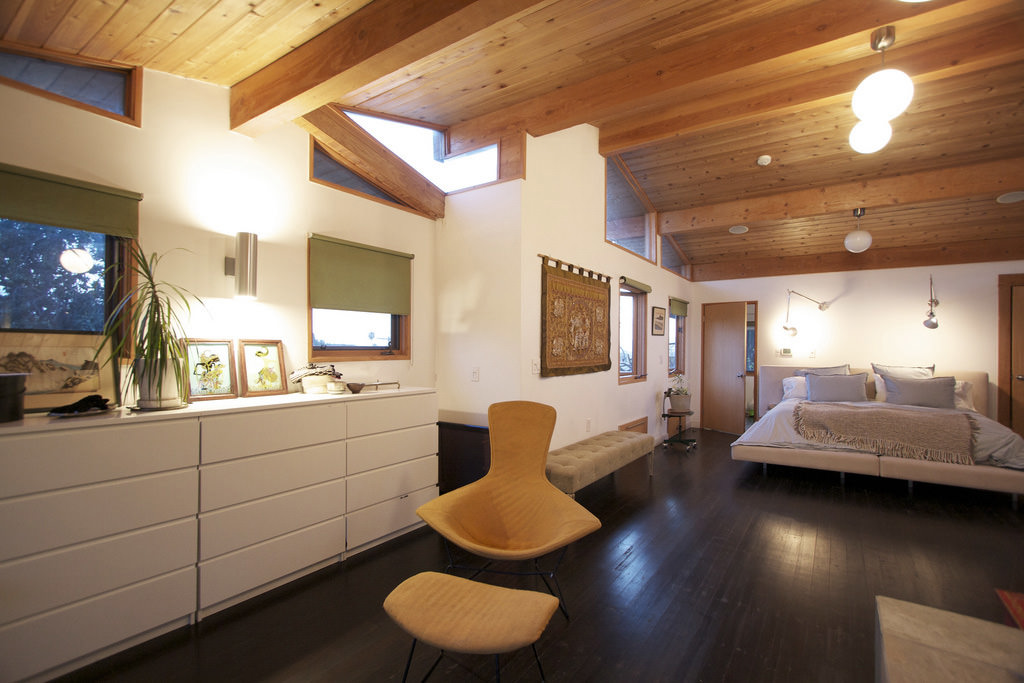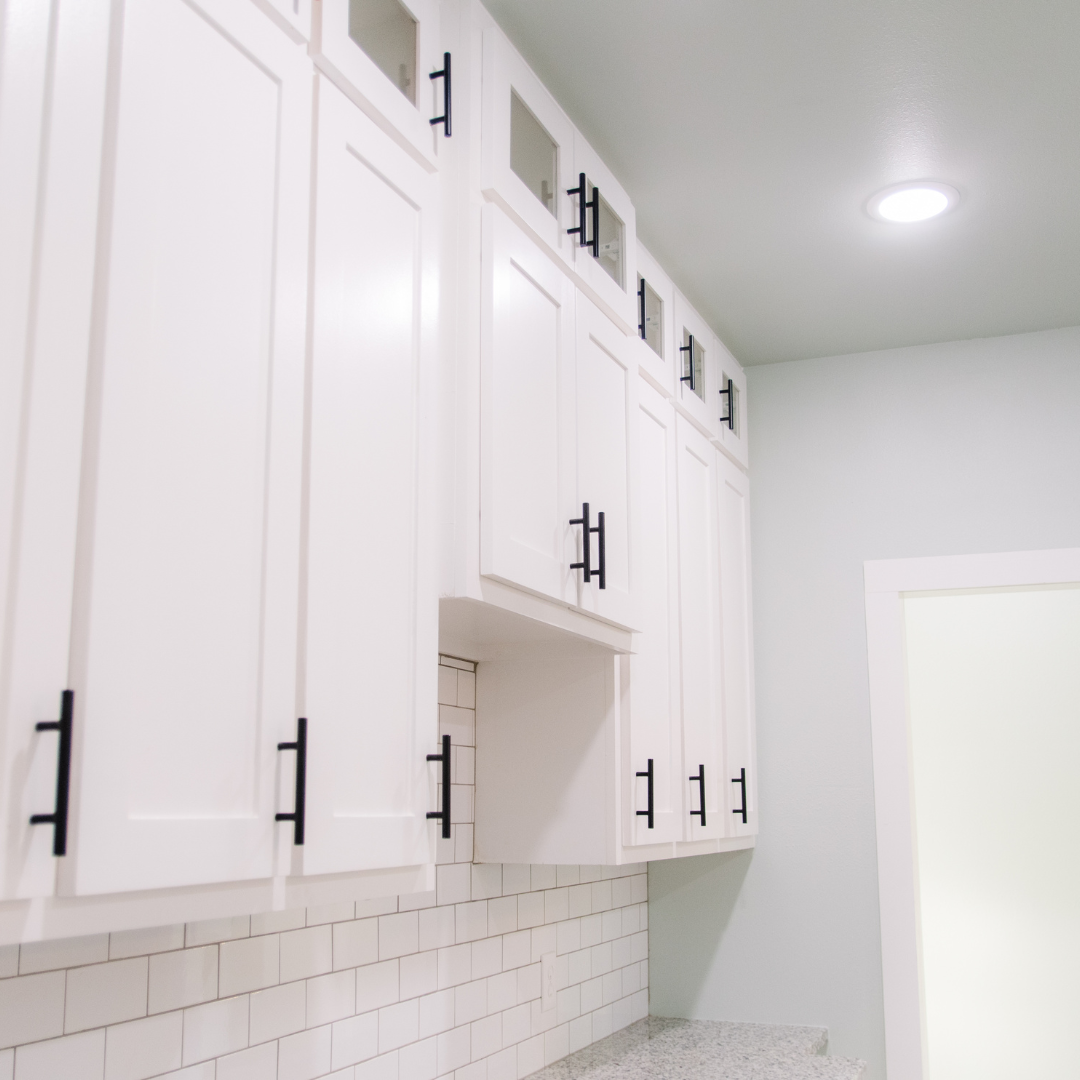Sustainability in interior design focuses on creating spaces that are not only aesthetically pleasing but also environmentally responsible. It involves selecting materials and products that have minimal negative impact on the environment, emphasizing renewable resources, and reducing waste. By incorporating eco-friendly products, designers can significantly lower the carbon footprint of a space, contributing to a healthier planet. The importance of sustainability is increasingly recognized, with both homeowners and businesses seeking out sustainable design solutions. This growing demand is driven by a heightened awareness of the environmental impact of traditional design practices, which often rely on non-renewable resources and generate substantial waste.
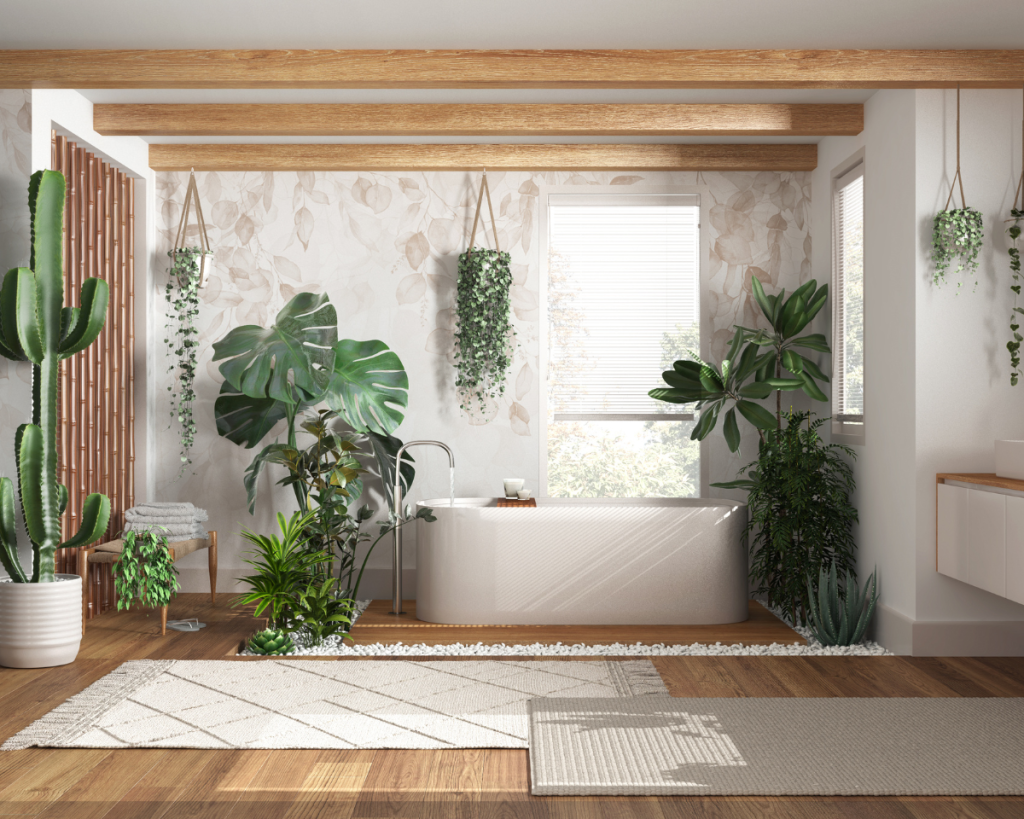
Why Eco-Friendly Interiors Matter
Traditional interior products often contribute to pollution, deforestation, and high energy consumption. By choosing sustainable materials, such as recycled or renewable resources, we can reduce these harmful effects. Additionally, eco-friendly interiors promote healthier living and working environments by minimizing the use of toxic chemicals, ultimately benefiting both people and the planet.
Understanding Eco-Friendly Materials
Natural and Renewable Materials
Natural and renewable materials are at the heart of sustainable interior design. These materials, such as bamboo, cork, jute, wool, and organic cotton, are derived from sources that can be replenished over time, making them an eco-friendly choice. Bamboo, for example, is one of the fastest-growing plants on Earth, making it a popular choice for flooring and furniture. Cork, harvested from the bark of cork oak trees, is a renewable resource used in flooring and wall coverings. Jute and wool are natural fibers ideal for textiles, offering durability and a low environmental footprint. These materials are also biodegradable, ensuring they won’t contribute to long-term waste.
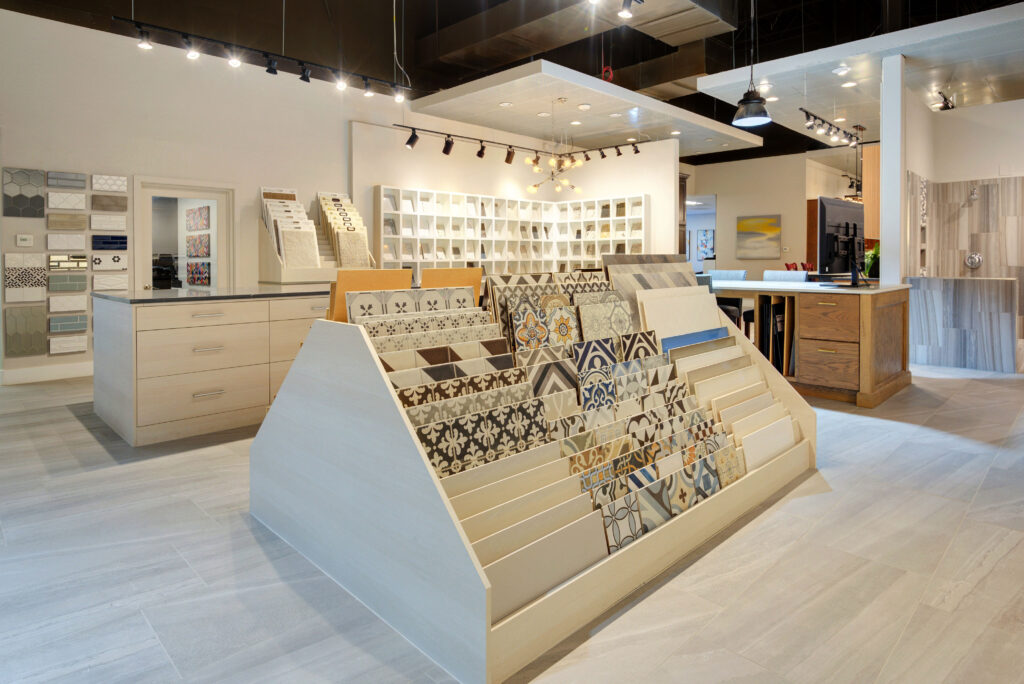
Recycled and Upcycled Materials
Recycled and upcycled materials are essential products for helping to reduce waste and conserve natural resources. Recycled materials, such as glass countertops made from post-consumer glass and reclaimed wood sourced from old buildings, are repurposed to create new products. Upcycling involves transforming discarded materials into something of higher value, like repurposing metal scraps into decorative items. These materials not only reduce the demand for virgin resources but also add unique character and history to interior spaces, making them ideal for furniture, flooring, and decor.
Low-VOC and Non-Toxic Materials
Volatile Organic Compounds (VOCs) are harmful chemicals found in many conventional paints, finishes, and adhesives that can off-gas into the air, posing health risks. Low-VOC and non-toxic materials offer a healthier alternative, significantly reducing indoor air pollution. By choosing low-VOC paints, finishes, and adhesives, designers can create spaces that are not only safer for occupants but also more environmentally friendly. These materials are essential for maintaining good indoor air quality, particularly in spaces where people spend extended periods, such as homes and offices. Their application helps ensure that the indoor environment supports well-being and sustainability.
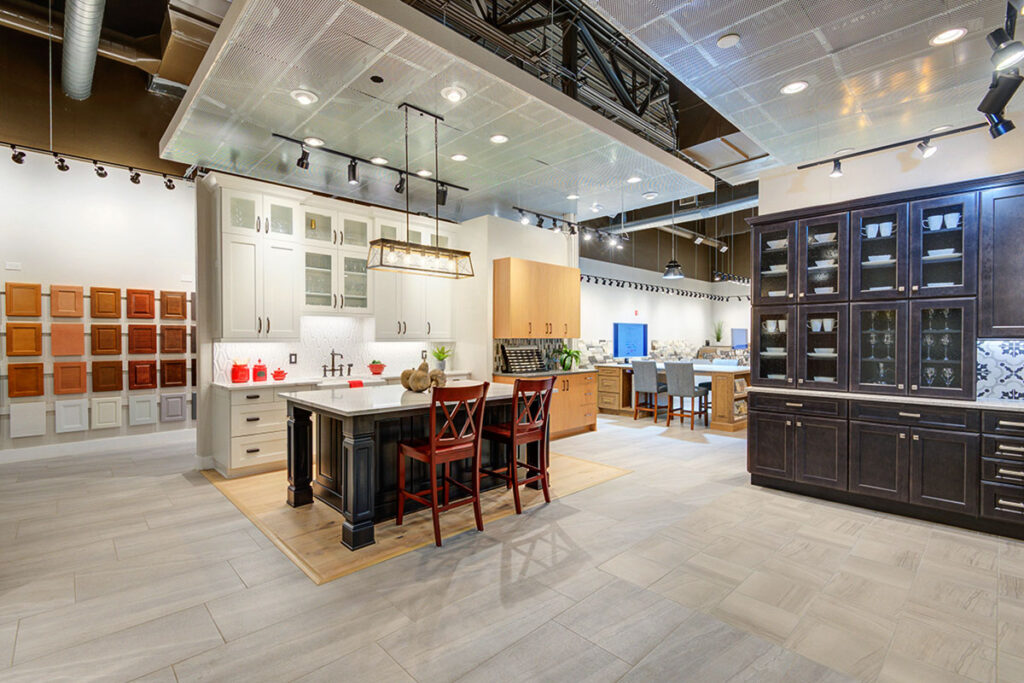
Sustainable Interior Design
Energy Efficiency in Design
Energy efficiency is a cornerstone of sustainable interior design, as it significantly reduces both the carbon footprint and operational costs of a space. At Primera, we understand the importance of integrating energy-efficient solutions into your home or commercial environment. Our range of energy-efficient window treatments, including motorized shades and cellular blinds, are designed to enhance insulation and reduce energy loss. By selecting the right window treatments, you can effectively maintain indoor temperatures, reducing the need for excessive heating in winter and cooling in summer. These treatments work in tandem with energy-efficient lighting, appliances, and HVAC systems to create eco-friendly interiors. For example, LED lighting consumes significantly less energy and lasts much longer than traditional bulbs, while smart thermostats optimize heating and cooling based on occupancy patterns. With Primera’s energy-efficient products, you can enjoy a comfortable, sustainable space that supports both environmental responsibility and long-term savings.
Water Conservation in Interior Spaces
Water conservation is another critical aspect of sustainable interior design, particularly in areas where water is scarce. Sustainable plumbing fixtures, such as low-flow faucets and dual-flush toilets, can drastically reduce water usage in both domestic and commercial environments. Water-saving appliances, like efficient dishwashers and washing machines, further contribute to conservation efforts. Additionally, implementing greywater systems and rainwater harvesting allows for the reuse of water in landscaping and other non-potable applications, helping to reduce overall water consumption.
Waste Reduction Through Design
Keeping waste reduction in mind is key to creating truly sustainable interior designs. This can be achieved by minimizing waste production during the construction and renovation processes, such as through modular design and prefabrication, which reduce excess material use. In commercial spaces, incorporating recycling stations and composting systems encourages occupants to manage waste responsibly. These strategies not only conserve resources but also promote a circular economy by ensuring that materials are reused and recycled rather than ending up in landfills.
Eco-Friendly Interior Products for Domestic Environments
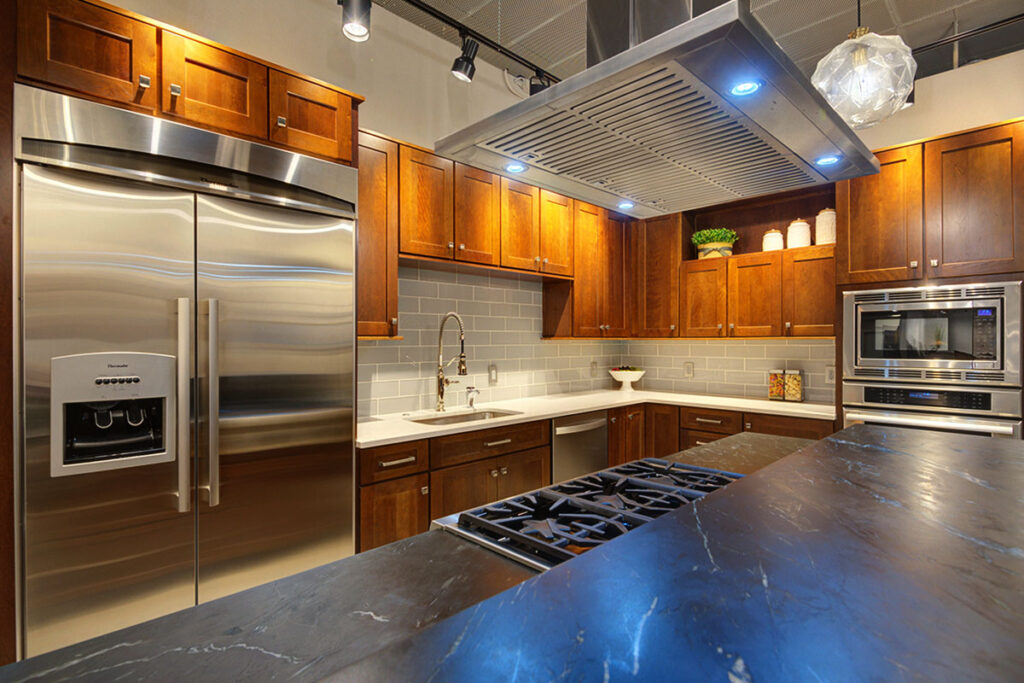
Furniture and Decor
Sustainable furniture and decor are integral to creating eco-friendly interior spaces. When choosing furniture, look for options made from FSC-certified wood, which ensures that the wood is sourced from responsibly managed forests. Reclaimed wood is another excellent choice, offering a unique, rustic appeal while reducing the demand for new timber. Recycled plastic furniture is also gaining popularity for its durability and versatility. In terms of textiles, opt for eco-friendly materials like organic cotton, linen, hemp, and recycled fabrics, which are grown and produced with minimal environmental impact. For home decor, natural rugs made from jute or wool, recycled glass vases, and non-toxic candles are just a few examples of products that contribute to a sustainable and healthy living environment.
Sustainable Flooring Options
Flooring is a significant element in interior design, and choosing sustainable materials can have a substantial environmental impact. At Primera, we offer a diverse selection of eco-friendly flooring options that combine beauty with sustainability. Our bamboo flooring is a popular choice due to its rapid renewability and durability, providing a sleek, modern look that fits seamlessly into any design. Cork flooring, harvested from the bark of cork oak trees, is another sustainable option that offers natural insulation and comfort underfoot, making it an excellent choice for both homes and commercial spaces. For those looking to add a sense of history and character, our recycled wood flooring repurposes materials from old buildings, bringing unique charm to any room. Additionally, natural stone, known for its durability and timeless aesthetic, offers a long-lasting flooring solution that, while less renewable, still supports sustainable design practices. Each of these materials not only enhances the beauty of your space but also reflects a commitment to environmental responsibility.
Green Interior Paints and Finishes
Choosing green interior paints and finishes is crucial for creating a healthy home environment. Many conventional paints contain harmful VOCs (Volatile Organic Compounds) that can off-gas into the air, posing health risks. Eco-friendly paint brands, such as Benjamin Moore’s Natura and Farrow & Ball, offer low-VOC or VOC-free options that significantly reduce indoor air pollution. Non-toxic finishes are equally important, ensuring that surfaces in your home are safe and free from harmful chemicals. When selecting sustainable paints and finishes, look for certifications like Green Seal or GREENGUARD, which indicate that the products meet strict environmental and health standards. Additionally, consider the color’s longevity and how well it complements the overall design, as choosing a durable, timeless color can reduce the need for frequent repainting, further minimizing environmental impact.
The Role of Recycling in Sustainable Interior Designs
Recycling Programs and Initiatives
Incorporating recycling programs into the interior design process, particularly in spaces dealing with countertops, flooring, cabinets, and window treatments, is crucial for reducing waste and promoting sustainability. Corporate recycling programs have a significant impact by diverting materials from landfills and repurposing them for new uses. For instance, a design firm might implement a recycling program that reuses leftover countertop materials or repurposes wood from old cabinets into new furniture pieces. Integrating recycling into the design phase ensures that materials are selected and managed with end-of-life considerations in mind, leading to more sustainable project outcomes. Successful initiatives in commercial spaces, such as recycling old flooring into new products or using reclaimed wood for cabinetry, showcase how thoughtful design can make a substantial environmental difference.
Upcycling in Interior Design
Upcycling involves creatively reimagining and repurposing existing materials into new, high-value products, a practice that is both environmentally and aesthetically beneficial in interior design. In the context of countertops, flooring, cabinets, and window treatments, upcycling can mean transforming old countertops into stylish coffee tables or turning discarded cabinet doors into unique wall art. The benefits of upcycling extend beyond waste reduction; it also adds character and uniqueness to a space. For example, a commercial space might upcycle reclaimed wood into a striking feature wall, blending sustainability with distinctive design.
Circular Economy in Interior Design
The concept of a circular economy is integral to sustainable interior design, emphasizing the importance of creating products and spaces with their entire lifecycle in mind. At Primera, we are committed to this approach by offering materials and products that can be repurposed and reused, ensuring minimal environmental impact. Our countertops, flooring, cabinets, and window treatments are designed with durability and adaptability in mind, allowing them to be disassembled, reconfigured, or recycled at the end of their initial use. For example, our modular cabinets can be easily reconfigured to suit changing needs, while our recycled flooring options can be refurbished and repurposed in future projects, embodying the principles of a circular economy. By selecting these sustainable materials, you contribute to a continuous cycle of use, reducing waste and conserving valuable resources. This approach not only supports environmental sustainability but also offers economic benefits by minimizing the need for new materials and reducing disposal costs, making it a smart choice for both the environment and your budget.
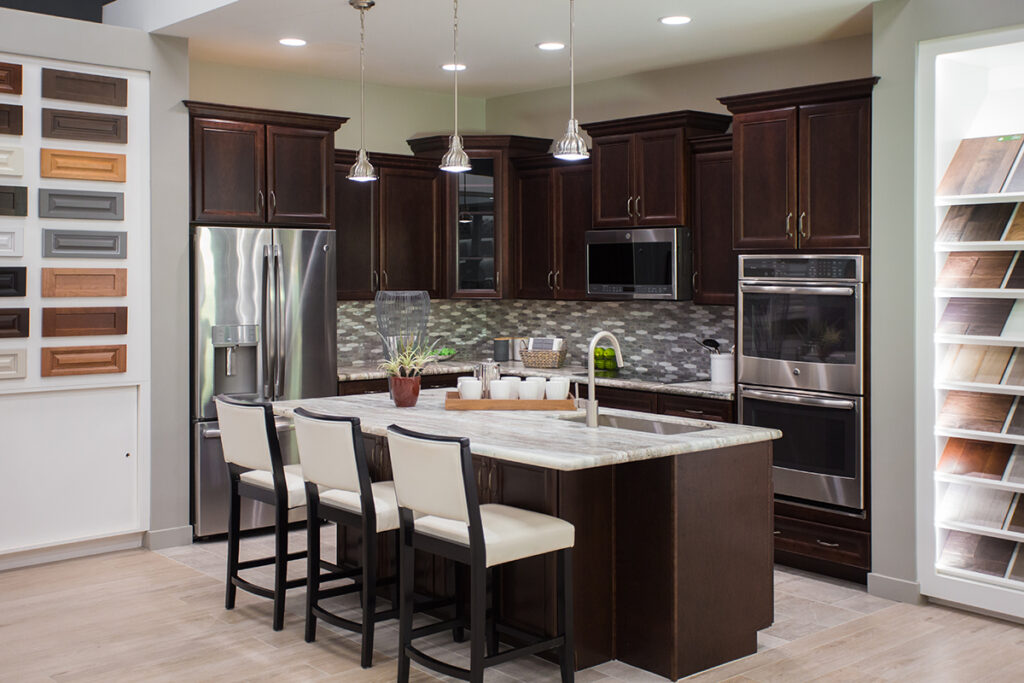
Challenges and Future Trends in Sustainable Interior Design
Challenges in Adopting Sustainable Practices
Adopting sustainable practices in interior design, particularly for countertops, flooring, cabinets, and window treatments, comes with several challenges. One of the primary obstacles is the cost consideration. While sustainable materials often require a higher initial investment, they offer long-term savings through durability, energy efficiency, and reduced maintenance costs. However, convincing clients to see beyond the upfront costs can be challenging. Additionally, the availability and sourcing of sustainable materials can be a hurdle, as eco-friendly options might not be as readily available as traditional materials, leading to longer lead times or limited choices. Overcoming misconceptions about aesthetics and functionality is another significant challenge. Many clients may believe that sustainable products are less attractive or durable compared to conventional options, making it essential for designers to educate them on the beauty and performance of eco-friendly materials.
Emerging Trends in Eco-Friendly Interiors
The landscape of sustainable interior design is rapidly evolving, with several emerging trends shaping the future. One such trend is the rise of biophilic design, which emphasizes the integration of natural elements into interior spaces to create a harmonious environment that supports well-being and sustainability. This trend is particularly relevant in the selection of natural materials for countertops, flooring, and window treatments. Innovations in sustainable materials are also driving change, with new options like mycelium-based products, algae-derived materials, and recycled ocean plastics offering exciting possibilities for eco-friendly interiors. These materials not only reduce environmental impact but also introduce new textures and aesthetics to design. Looking ahead, the integration of smart technology with sustainable design is poised to revolutionize interiors. From energy-efficient smart windows that adjust to light conditions to smart cabinets made from recycled materials, the future of interior design lies in the seamless blend of technology and sustainability. This integration will allow for more efficient resource use and create spaces that are both cutting-edge and environmentally responsible.
Embracing Eco-Friendly and Sustainable Products
Sustainable interior design is more than a trend; it’s an essential strategy for creating spaces that are environmentally responsible, healthy, and economically advantageous over the long term. At Primera, we prioritize the integration of eco-friendly materials in our product offerings, including recycled, renewable, and low-VOC options for countertops, flooring, cabinets, and window treatments. By choosing these sustainable products, designers can significantly lower the environmental impact of their projects. These materials not only enhance the aesthetics of a space but are also durable and non-toxic, contributing to improved indoor air quality and overall well-being. Additionally, sustainable interiors offer substantial long-term cost savings by reducing energy consumption, minimizing maintenance needs, and boosting property value. By embracing eco-friendly design with Primera’s products, you are not only investing in beautiful and functional spaces but also supporting a healthier planet for future generations.
Ready to transform your space with sustainable, eco-friendly design? Explore Primera’s wide range of environmentally responsible products for countertops, flooring, cabinets, and window treatments. Contact us today to start creating beautiful, healthy interiors that support a greener future. Let’s design a space you’ll love with the planet in mind.
